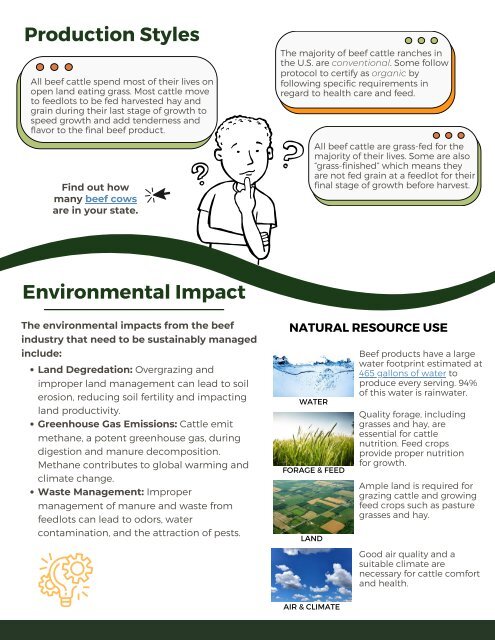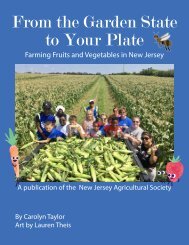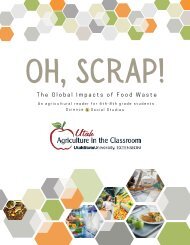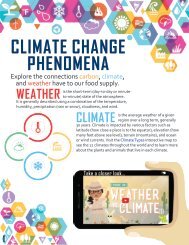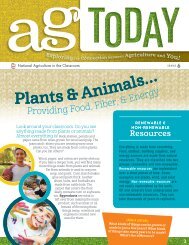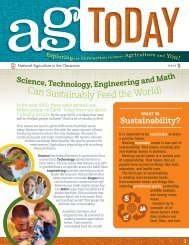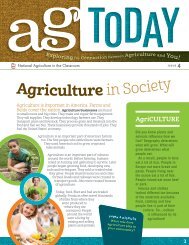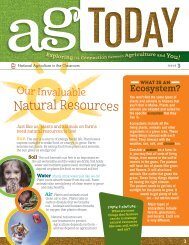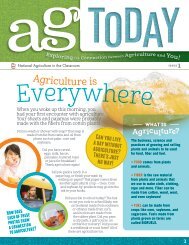Livestock Production
Create successful ePaper yourself
Turn your PDF publications into a flip-book with our unique Google optimized e-Paper software.
<strong>Production</strong> Styles<br />
All beef cattle spend most of their lives on<br />
open land eating grass. Most cattle move<br />
to feedlots to be fed harvested hay and<br />
grain during their last stage of growth to<br />
speed growth and add tenderness and<br />
flavor to the final beef product.<br />
Find out how<br />
many beef cows<br />
are in your state.<br />
The majority of beef cattle ranches in<br />
the U.S. are conventional. Some follow<br />
protocol to certify as organic by<br />
following specific requirements in<br />
regard to health care and feed.<br />
All beef cattle are grass-fed for the<br />
majority of their lives. Some are also<br />
“grass-finished” which means they<br />
are not fed grain at a feedlot for their<br />
final stage of growth before harvest.<br />
Environmental Impact<br />
The environmental impacts from the beef<br />
industry that need to be sustainably managed<br />
include:<br />
Land Degredation: Overgrazing and<br />
improper land management can lead to soil<br />
erosion, reducing soil fertility and impacting<br />
land productivity.<br />
Greenhouse Gas Emissions: Cattle emit<br />
methane, a potent greenhouse gas, during<br />
digestion and manure decomposition.<br />
Methane contributes to global warming and<br />
climate change.<br />
Waste Management: Improper<br />
management of manure and waste from<br />
feedlots can lead to odors, water<br />
contamination, and the attraction of pests.<br />
NATURAL RESOURCE USE<br />
WATER<br />
FORAGE & FEED<br />
LAND<br />
Beef products have a large<br />
water footprint estimated at<br />
465 gallons of water to<br />
produce every serving. 94%<br />
of this water is rainwater.<br />
Quality forage, including<br />
grasses and hay, are<br />
essential for cattle<br />
nutrition. Feed crops<br />
provide proper nutrition<br />
for growth.<br />
Ample land is required for<br />
grazing cattle and growing<br />
feed crops such as pasture<br />
grasses and hay.<br />
Good air quality and a<br />
suitable climate are<br />
necessary for cattle comfort<br />
and health.<br />
AIR & CLIMATE


